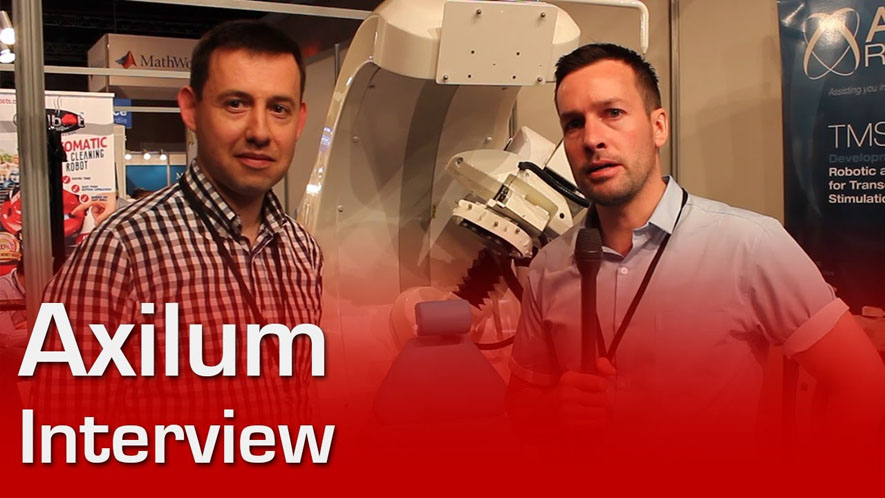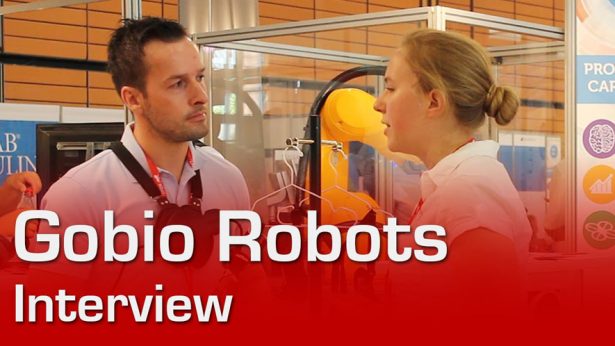Hi, guys! Philip English from RoboPhil.com and today we have an interview with Romuald Ginhoux from Axilum Robotics.
Philip: Right! Hi, Guys! Philip English here again, so we are at another stand, so this is more of a medical robot?
Romuald: Yes. This is a medical robot.
Philip: Medical robot. Okay. So, we got a gentleman here to introduce himself and tell us a little bit more about this robot.
Romuald: My name is Romuald Ginhoux. I am a Ph.D. in Medical Robotics. I am one of the designers of this robot. I am a software and robotics engineer, working at Strasbourg, France.
Philip: We are speaking earlier and this is a French robot but it got a bit of a Canadian software and it got a bit of Danish technologies as well.
Romuald: Yes, we have several partnerships with several companies and especially a Canadian company developing their own navigation software, which you’ll need to control the robot and Danish Company and also a company in Wales doing stimulation coils which we need to put on the robot to deliver stimulation.
Philip: Is it ideal for this to go into hospital or the sort of environment or is it more of specialized.
Romuald: This is for the hospital doing psychiatry and neurology especially treatment of drug-resistant diseases like depression, I mean, severe depression or chronic neuropathic pain.
Philip: The robot is designed to look in the brain and explain why is actually its main role.
Romuald: The robot does not look at the brain. The vision goes MRI scanner before the session, the treatment, then MRI images are loaded into our navigation software and the robot will look at which positions you want to see in the brain and put the stimulation coil on the head to target these areas.
Philip: How is it stimulate? Is it like electronic?
Romuald: This is electromagnetic, I mean, very short electromagnetic field and very intense. It is same intensity as in MRI scanner but very short.
Philip: Okay. Is it quite safe to use? There’s nothing dangerous about it?
Romuald: It is safe as long as you follow official safety guidelines to set up the intensity of stimulation.
Philip: Is this currently being used in a hospitals right at the moment or it is just a startup?
Romuald: We have few installations, 10 installations in hospital in France and in Europe and in the world.
Philip: And the idea is to help people with depression, someone sad, you can actually see where it is in the mind.
Romuald: Yes, depression treatment usually people will target area in frontal cortex which is responsible for depression.
Philip: And then so you guys trying to expand out trying to get out into more hospitals now, is that right?
Romuald: Yes, of course!
Philip: Okay. Now that is a brilliant overview. What will I do is put some links for you guys below so you can have a look and learn more. Thank you very much for your time.
Romuald: You welcome. Thank you!
Axilum Robotics: www.axilumrobotics.com/en
Axilum Robotics YouTube: https://youtu.be/W-DJ5RebuoQ
Philip English: https://philipenglish.com
Sponsor – Robot Center: https://www.robotcenter.co.uk




